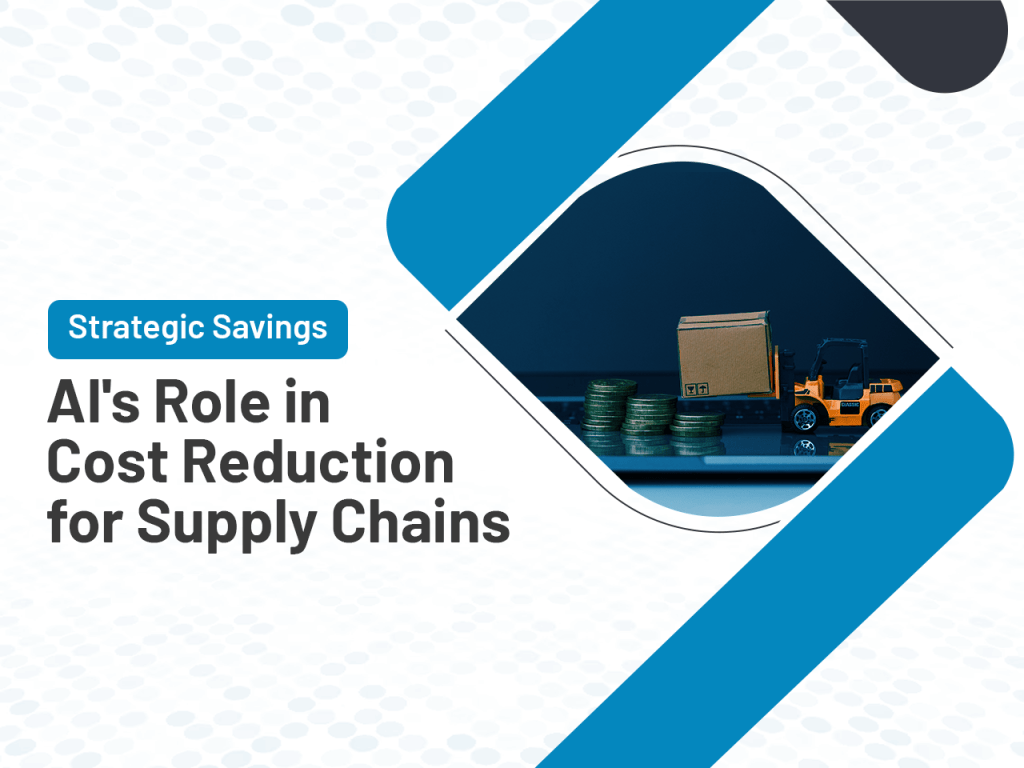Introduction
The Crucial Role of Supply Chain Cost Reduction
In the dynamic landscape of modern business, supply chain cost reduction stands as a pivotal factor influencing a company’s bottom line. The intricate interplay of production, distribution, and logistics requires a delicate balance between efficiency and expenditure. As businesses strive to remain competitive, the strategic trimming of costs emerges as an imperative. Not only does it enhance profitability, but it also fosters resilience in an environment marked by economic uncertainties. Companies that master the art of cost reduction often find themselves better positioned to adapt and thrive in an ever-evolving market.
As we navigate the complex realm of supply chain dynamics, the advent of artificial intelligence (AI) heralds a transformative era in strategic savings. AI, with its capacity to analyze vast datasets, predict trends, and automate intricate processes, emerges as a catalyst for efficiency. This section delves into the promising realm of AI-driven strategic savings, exploring how cutting-edge technology is reshaping traditional approaches to cost reduction. By understanding the nuances of AI’s role, businesses can unlock new avenues for sustained savings, propelling them into a future where innovation and efficiency go hand in hand.
Understanding Strategic Savings in Supply Chains
Strategic savings in supply chains involve purposeful, long-term cost reduction efforts that transcend immediate measures. It encompasses initiatives aimed at optimizing operational efficiency and aligning with overarching business objectives. Significantly, this approach fortifies companies against economic uncertainties by proactively adapting to market dynamics. Unlike reactive cost-cutting, strategic savings contribute to sustained profitability, market competitiveness, and overall supply chain resilience, emphasizing a forward-thinking and holistic approach to financial health.
The Concept of AI-Driven Strategic Savings
In the evolving landscape of supply chain management, the emergence of AI heralds a paradigm shift in how businesses approach strategic savings. AI, or artificial intelligence, introduces a transformative dimension by leveraging advanced algorithms and data analytics to optimize various facets of the supply chain. Unlike traditional methods, AI-driven strategic savings involve intelligent automation, predictive analytics, and real-time decision-making. This section explores how AI becomes a catalyst for efficiency, offering businesses the capability to identify, implement, and sustain strategic cost-saving measures. As we delve into AI’s role, it becomes clear that harnessing its power is not just a technological leap but a strategic imperative for the future of supply chain economics.
Realizing Cost Reduction: AI Tactics in Supply Chains
In the pursuit of strategic savings within supply chains, AI unfolds a toolkit of transformative tactics. This section delves into three specific AI-driven strategies, each targeting a crucial aspect of cost reduction:
- Predictive Analytics for Demand Forecasting
- Utilizing AI algorithms to analyze historical data and market trends.
- Anticipating future demand patterns with precision, minimizing overstock or stockouts.
- Enabling proactive decision-making and streamlined inventory management.
- Automation of Repetitive Tasks for Labor Cost Savings
- Deploying AI-powered automation to handle routine and repetitive tasks.
- Reducing reliance on manual labor for mundane operations, leading to significant cost savings.
- Freeing up human resources for more strategic and value-added activities.
- Optimization of Route Planning for Logistics Efficiency
- Leveraging AI algorithms to analyze real-time data on traffic, weather, and road conditions.
- Dynamically optimizing delivery routes to minimize fuel consumption and transportation costs.
- Enhancing overall logistics efficiency while reducing operational expenses.
This detailed breakdown illustrates how AI, through predictive analytics, automation, and optimization, becomes a multifaceted tool for supply chain managers to strategically cut costs, enhance efficiency, and position their operations for sustained savings.
Evolving AI in Supply Chain Management
As we navigate the frontier of supply chain optimization, emerging AI trends are reshaping the landscape. From enhanced machine learning algorithms to the integration of IoT devices, this exploration unveils a dynamic ecosystem where AI continually evolves. Augmented reality, digital twins, and cognitive automation are emerging trends, revolutionizing how businesses operate.
Looking ahead, these advancements hold profound implications for cost reduction. Precision in demand forecasting, real-time visibility across the supply chain, and self-optimizing systems not only promise heightened efficiency but also pave the way for unparalleled strategic savings. As AI matures, businesses can anticipate a future where proactive, data-driven decision-making becomes the linchpin for sustained financial resilience.
Conclusion
All in all, this blog illuminates the critical intersection of supply chain efficiency and strategic savings through AI. From predictive analytics to task automation, we’ve unraveled AI’s transformative impact on cost reduction. As businesses navigate an ever-changing landscape, embracing AI in supply chains emerges not just as an innovation but as a strategic imperative. The key lies in unlocking the potential for sustained savings and unparalleled efficiency.
Ready to revolutionize your supply chain? Explore the transformative power of QuadratyxAI solutions today. From predictive analytics to intelligent automation, discover how our cutting-edge technology can strategically reshape your operations for sustained cost reduction and efficiency. Don’t just adapt; lead the way in the future of supply chain management. Take the first step towards a smarter, more efficient tomorrow.

